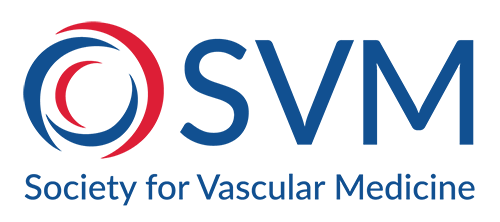This section is designed to provide general guidance and potential useful tools for developing an evaluation process for vascular medicine training programs. It is essential that a program have a process for the evaluation of both the trainees, to assure achievement of clinical competency and reaching key milestones, and the program and its faculty.
Evaluations of Fellows
- An assessment of the educational performance of trainees should be performed by faculty either per rotation or on a pre-planned timed schedule.
- The evaluation content should address ACGME core domains (of medical knowledge, patient and procedural skills, systems-based practice, practice-based learning and improvement, professionalism, and interpersonal and communication skills) and curricular milestones (see COCATS-4 and Advance Training in Vascular Medicine).1,2
- The evaluation form utilized may be a standardized ABIM form used by other training programs within ones institution or more specific/tailored for rotations according to anticipate exposure and milestones. The form may focus on representative components in a given area rather than being specific/detailed within each area.
- The evaluation process should include a baseline or initial, formative, and summative assessments.
- An initial competence assessment of each trainee should be performed by the program directors within 3 months of starting the program, including all prior milestone assessments.
- Additional formative assessments should be performed by the program directors on a schedule basis to allow for feedback to modify performance. This may be structured in written and/or discussion based formats.
- If clinical performance is judged to be unsatisfactory, then a plan of action should be developed and implemented in a prompt manner.
- Program leadership should evaluate the trainees overall performance and provide feedback on at least a semi-annual basis. In addition to evaluations from the clinical faculty, fellows will be reviewed on 1. case presentations; 2. conference and journal club presentation; 3. progress on research project; 4. participation in seminar and other educational series. Additional assessment tools may include chart-stimulated recall, direct observation, and multisource evaluations (with assessments by others interacting with the trainees to provide a more comprehensive 360 degree perspective).
- A final summative assessment should be provided by the program directors upon completion of the program.
- Example of evaluation forms used by programs include the following:
Fellow Evaluation of Faculty and Program
- Trainees should have the opportunity to evaluate the program’s clinical and educational elements, and the faculty, in terms of supervision/teaching/mentoring.
- These assessments should cover the supervision, teaching environment, workload, and success achieving the rotational goals and objectives.
- Trainees should be encourage to raise any concerns without fear of retaliation.
- This may be done by either direct communication or using written forms.
- Example of evaluation forms used to by programs:




